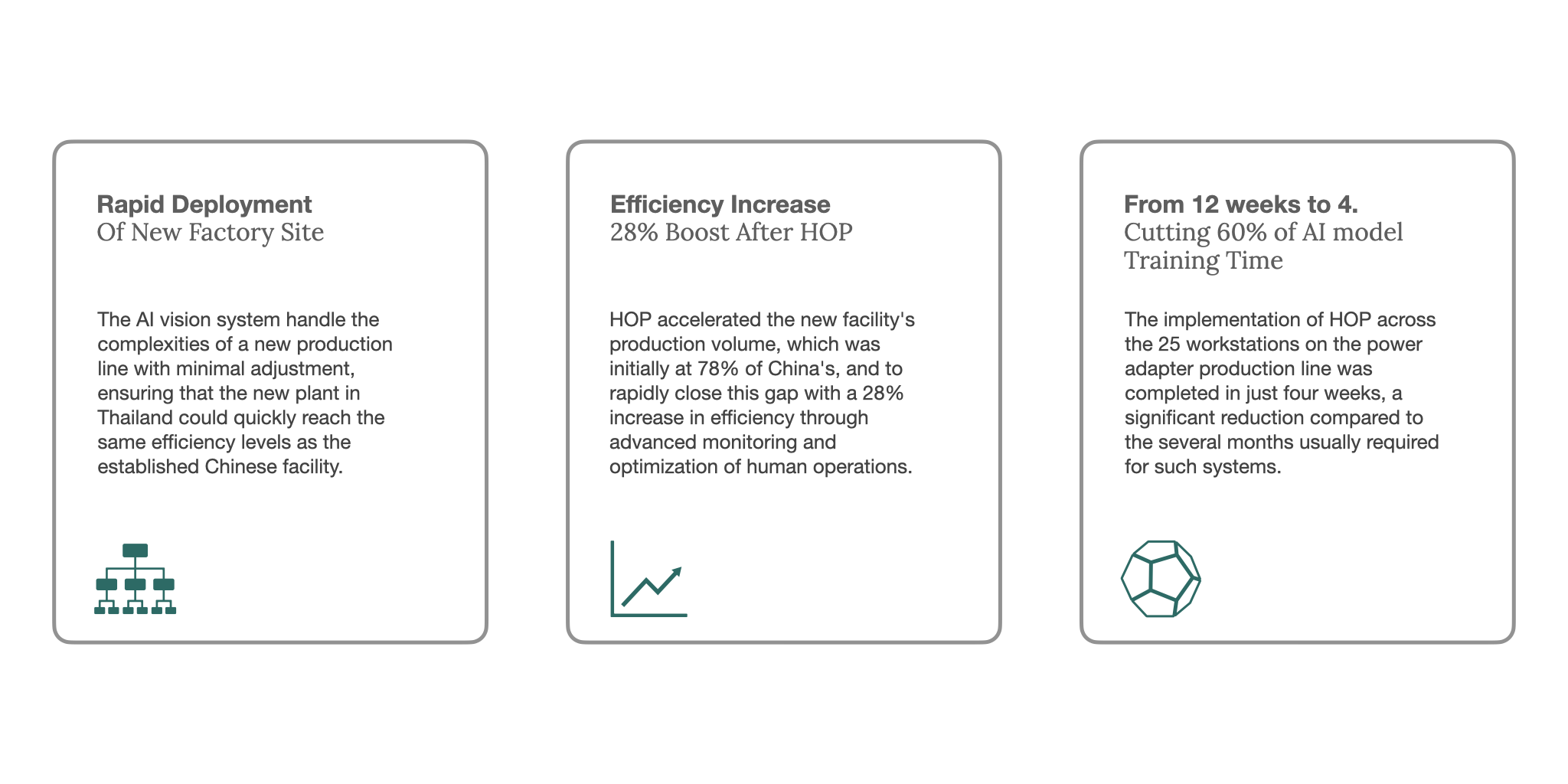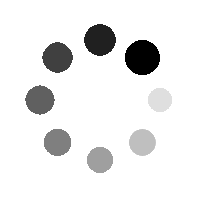Rapid Deployment of PowerArena’s Human Operation Platform at a Leading Electrical Manufacturing Enterprise
OVERVIEW
A globally recognized electrical manufacturing service enterprise, renowned for producing high-quality power adapters, sought to replicate its successful production line from its flagship facility in China to a new location in Thailand. The goal was to accelerate the new facility’s production volume, which was initially at 78% of China’s, and to rapidly close this gap with a 28% increase in efficiency through advanced monitoring and optimization of human operations.
The Challenge: Speed of Deployment in a New Environment
In the fast-paced world of manufacturing, time is of the essence, especially when scaling operations to new locations. Typically, deploying AI vision systems to monitor and optimize human operations on a production line is a complex and time-consuming process. This involves training models to recognize a variety of objects and conditions specific to each production environment, a task that often takes several months.
The enterprise needed a solution that could be implemented rapidly, without the usual delays associated with AI model training. They also required the system to be robust enough to handle the complexities of a new production line with minimal adjustment, ensuring that the new plant in Thailand could quickly reach the same efficiency levels as the established Chinese facility.
The Solution: PowerArena’s Human Operation Platform (HOP) with Fundamental Model
![]()
HOP’s Fundamental Model:
The PowerArena Human Operation Platform (HOP) was chosen for its unique ability to offer a rapid deployment solution. At the heart of this capability was HOP’s Fundamental Model, pre-trained to identify essential elements such as Hand, Person, Carrier, and PCB. This model was specifically designed to eliminate the lengthy training periods typically associated with AI vision systems.
Rapid Implementation Process:
The implementation of HOP across the 25 workstations on the power adapter production line was completed in just four weeks, a significant reduction compared to the several months usually required for such systems. This swift deployment was made possible by the Fundamental Model’s ability to immediately start recognizing key objects and processes without the need for extensive customization or retraining.
Key Metrics Monitored:
- Object Detection: The HOP system accurately identified and tracked the movement of PCBs and carriers across all workstations.
- Work Cycle Definition and Cycle Time Collection: By defining work cycles and collecting cycle time data, HOP provided real-time insights into the efficiency of each workstation.
- Precise Unit Output Calculation: HOP was able to identify multiple objects placed on the same carrier, allowing for the calculation of precise unit outputs.
Overcoming Traditional AI Implementation Challenges
Lengthy Model Training:
Traditional AI vision systems require extensive time to train models for recognizing different objects in a production line, often delaying deployment. HOP’s pre-trained Fundamental Model bypassed this challenge, enabling the enterprise to go live in a matter of weeks. Cutting down to only 4 weeks from 12 weeks.
Environmental Variables:
In typical implementations, variables such as lighting, camera angles, and object design can significantly impact the accuracy of AI systems, leading to high failure rates. HOP’s robust object detection capabilities proved effective across varying conditions, ensuring consistent performance.
Scalability and Flexibility:
Scaling AI solutions across different production environments usually involves time-consuming retraining. However, HOP’s flexible and scalable design allowed the enterprise to quickly adapt the successful model from China to the new Thai facility without significant adjustments.
Results: A Leap in Production Efficiency
HOP facilitated consistent performance across locations by accurately identifying and tracking key objects and processes, enabling the seamless transfer of successful practices from China to Thailand. This consistency allowed the new facility to quickly reach near-optimal production levels, matching the high standards of the established Chinese operations.
Moreover, the scalability and flexibility of HOP allowed the enterprise to adapt quickly to the new environment with minimal adjustments, significantly reducing the time and resources required for deployment.
The implementation of PowerArena’s Human Operation Platform with its pre-trained Fundamental Model provided the enterprise with exceptional agility, crucial for replicating production lines in new facilities. The Fundamental Model’s ability to recognize essential elements like Hand, Person, Carrier, and PCB without extensive retraining ensured that the new plant could quickly achieve operational efficiency.



